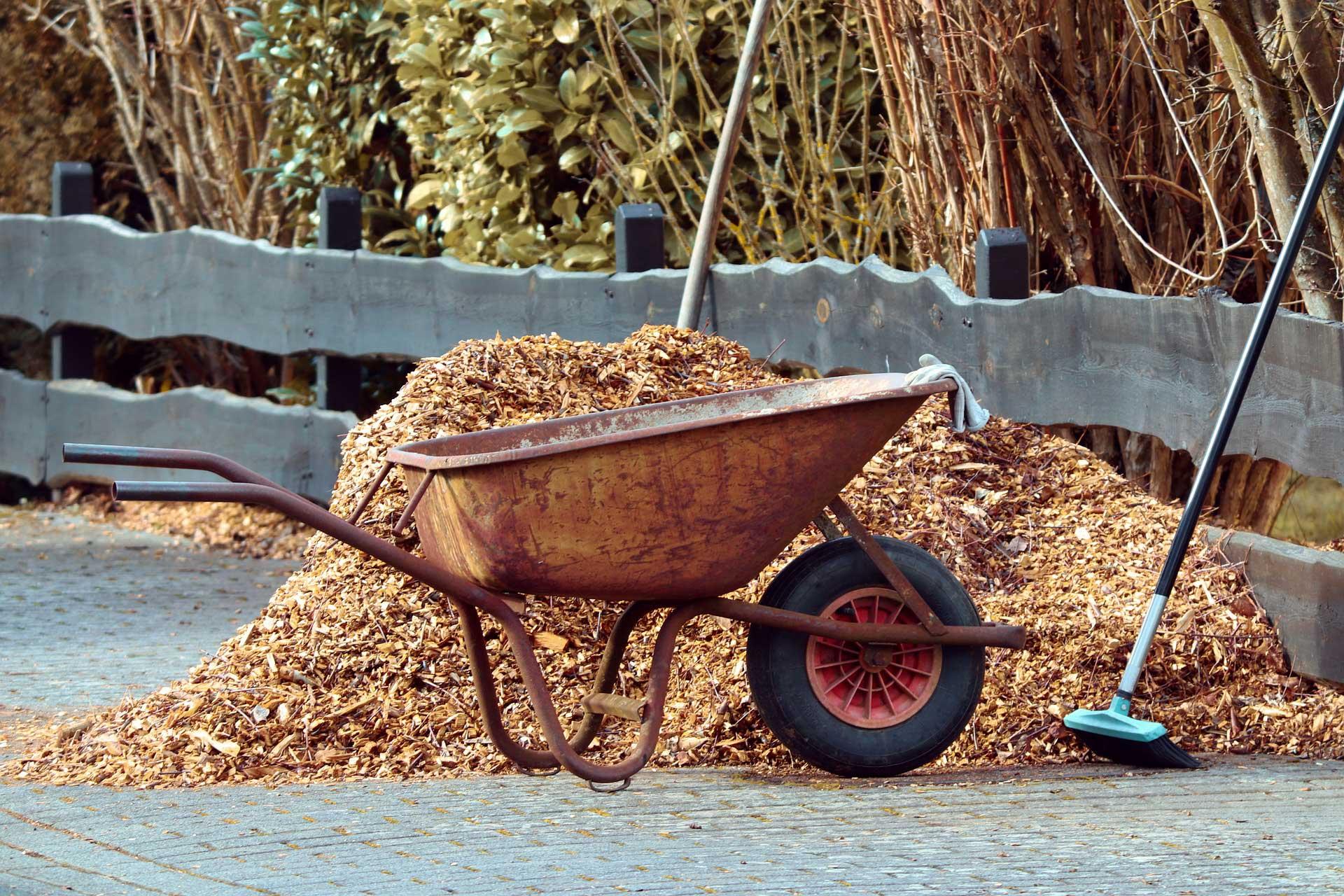Mulch should never touch the bark of a plant!
Does mulch serve a purpose beyond aesthetics?
- Mulch is a material applied to the surface of the soil around trees and shrubs.
- Mulch reduces weeds, conserves soil moisture, and minimizes soil erosion. Mulching is a standard horticulture practice.
- Maximize the growth of new trees and shrubs by mulching an area underneath the plants instead of planting grass, shrubs, or groundcover. This reduces competition for nutrients and moisture.
- Additional benefits of proper mulching include moderating soil temperatures, reducing soil compaction, protecting plants from equipment injury (lawnmowers and weed trimmers), and better appearance.
- There are various reasons to mulch trees and shrubs. To improve the growth of the plant’s root system, apply mulch over a substantial percentage of the root zone area. To protect the plant from equipment damage, apply mulch over as large an area as necessary to create a safety zone around the plant.
- For aesthetics, apply your favorite mulch to achieve the look you desire but refrain from over mulching.
How much mulch is too much?
- Apply mulch as far out as the spread of the branches, if possible.
- Excess mulch can cause problems. Plants that are not mulched correctly can experience problems, decline, and even die from too much mulch piled on root systems
- Always keep mulch shallow, from one to three inches.
- Keep mulch about 3 inches away from the base of tree trunks. Mulch should never touch the trunk of the tree.


Types of mulch
Organic mulches
Bark
- Softwood (pine-bark) mulches are readily available and slow to decompose and have a pleasant appearance. They are sometimes more expensive than shredded hardwood.
- Hardwood bark mulches are readily available and less expensive than other mulches. Hardwood barks may contain high levels of manganese, which can be toxic to plants in soils with a pH below 5.0.
- Apply bark mulches 1-3 inches deep.
Wood chips and sawdust
- Wood chips and sawdust are sometimes available at free or low cost from local tree removal and trimming companies and sawmills.
- It is okay to use fresh arborist wood chips as mulch around trees and shrubs as long as they are not incorporated into the soil. They are not recommended for use around annuals and vegetables.
- Sawdust and, to a lesser extent, wood chips deplete soil nitrogen, if worked into the soil. Monitor foliage color and growth of plants mulched with either of these materials. If plants become chlorotic and growth slows, apply an application of one to two pounds of nitrogen per 1,000-square-feet of landscape area.
- Apply wood chips 1-3 inches deep and sawdust 1 inch deep.
Pine needles
- Pine needles, also called pine straw, are slow to decay, are attractive, and add fragrance to the landscape.
- Apply a 2-3 inch layer.
Grass clippings
- Generally, it is recommended to leave grass clippings on the lawn after mowing to decompose but they can be composted or used as mulch.
- They decompose rapidly and must be replaced on a regular basis.
- Avoid clippings that contain weed seeds. Do not use clippings from lawns treated that season with herbicides or a fertilizer-herbicide combination.
- Apply a 1-2 inch layer.
Leaves
- Leaves make excellent mulch, especially when shredded.
- They decompose quickly but improve soil conditions in the process.
- Apply a 2-3 inch layer.
Compost
- Compost makes an excellent mulch with a mulching mower.
- It will continue to decompose and needs replacing on an annual basis.
- Regular additions of compost will improve soil structure significantly.
- Apply about a 1-inch layer.
Inorganic mulches
Gravel, stone, and lava rock
- Provide long-lasting mulch and are especially useful in special plantings such as rock and alpine gardens.
- Lava rock is usually red in color and weighs much less than gravel and stone.
- These materials are often used over plastic or fabric.
- Avoid using stone mulches that contain limestone, which can alter soil pH.
- Apply gravel, stone, or lava rock in a 1-inch layer.
Landscape fabrics
- Landscape fabrics are synthetic materials that conserve soil moisture and provide good weed control.
- They come in two forms: woven and spun-bonded. Some woven types look like burlap and others have the texture of a fine screen. Spun-bonded types have a fibrous texture and are more effective on slopes.
- In the landscape, both types are covered with a layer of bark or stone.
- Soil and organic debris can collect on the top of fabric mulches. Weed seeds germinate in this soil and debris and the weed roots often penetrate the fabric. Weeds growing on top of the fabric can be difficult to remove. Hand pull weeds before they mature and produce seeds.
- Remove or cut away any synthetic landscape fabric near the base of tree roots. Synthetic fabrics can lead to the development of girdling roots, restricting normal root growth which can lead to tree decline
